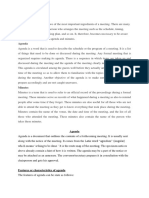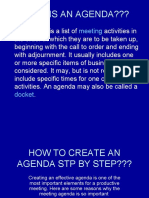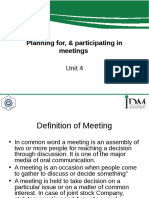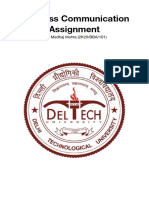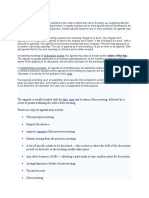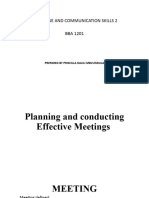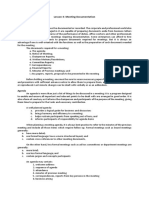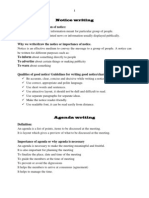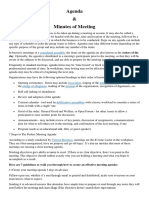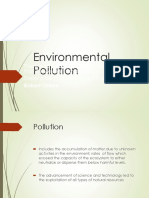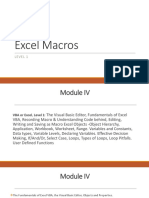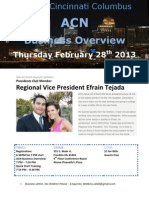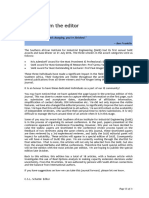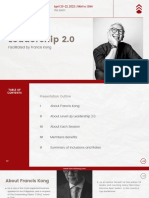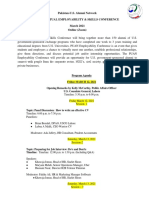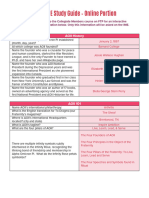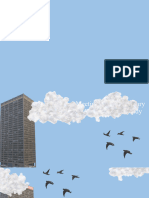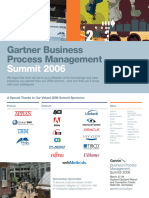0% found this document useful (0 votes)
118 views25 pagesEffective Meeting Communication
The document provides guidance on effective business communication techniques for meetings, including sending a clear agenda in advance, starting and ending meetings on time, and taking thorough meeting minutes that record all discussion points, decisions made, and action items. It also offers tips for chairing sessions, such as introducing speakers and their topics, managing questions and answers, and wrapping up the session effectively. Meeting minutes should capture the key discussion points and outcomes in an organized manner according to common templates like minutes of narration or resolution.
Uploaded by
Sooraj KrishnanCopyright
© © All Rights Reserved
We take content rights seriously. If you suspect this is your content, claim it here.
Available Formats
Download as PPTX, PDF, TXT or read online on Scribd
0% found this document useful (0 votes)
118 views25 pagesEffective Meeting Communication
The document provides guidance on effective business communication techniques for meetings, including sending a clear agenda in advance, starting and ending meetings on time, and taking thorough meeting minutes that record all discussion points, decisions made, and action items. It also offers tips for chairing sessions, such as introducing speakers and their topics, managing questions and answers, and wrapping up the session effectively. Meeting minutes should capture the key discussion points and outcomes in an organized manner according to common templates like minutes of narration or resolution.
Uploaded by
Sooraj KrishnanCopyright
© © All Rights Reserved
We take content rights seriously. If you suspect this is your content, claim it here.
Available Formats
Download as PPTX, PDF, TXT or read online on Scribd
/ 25

